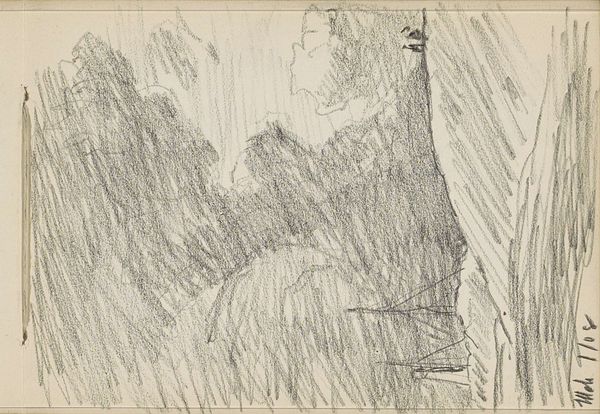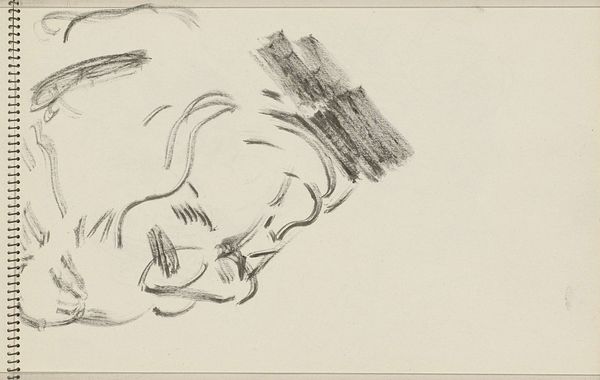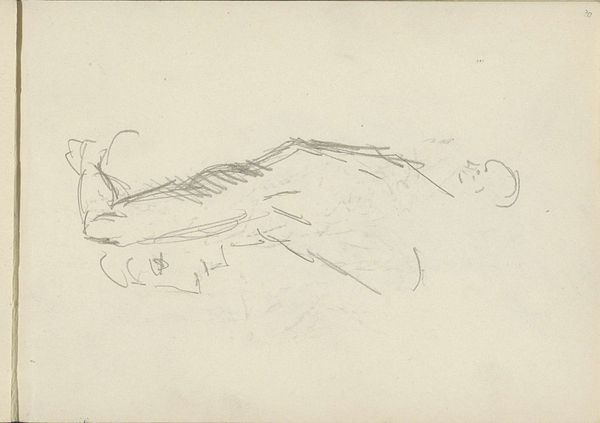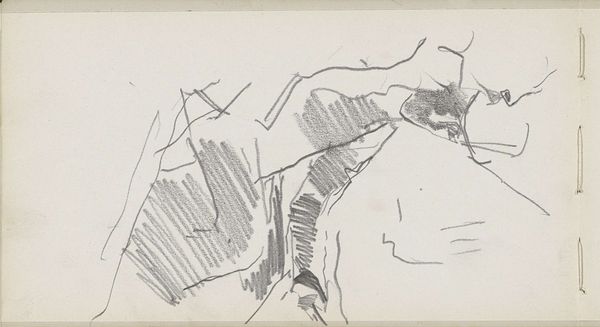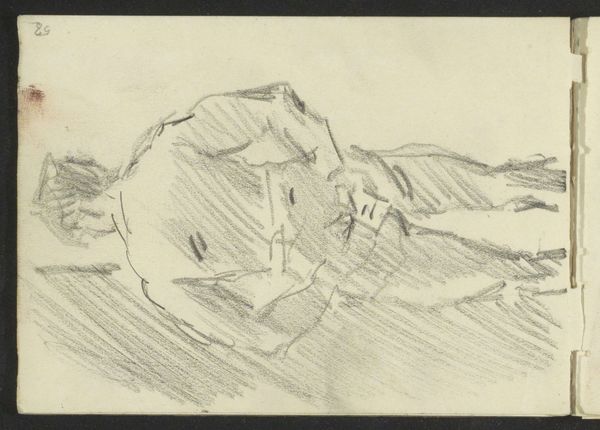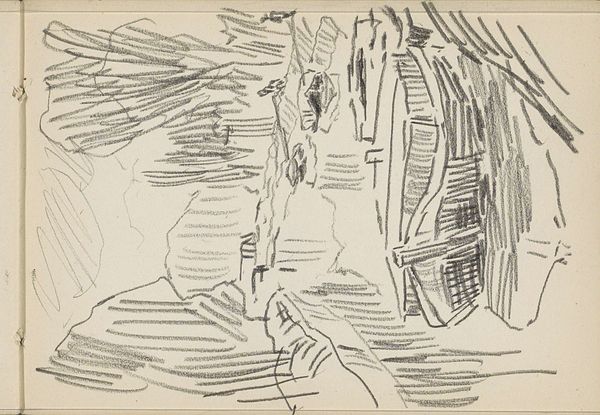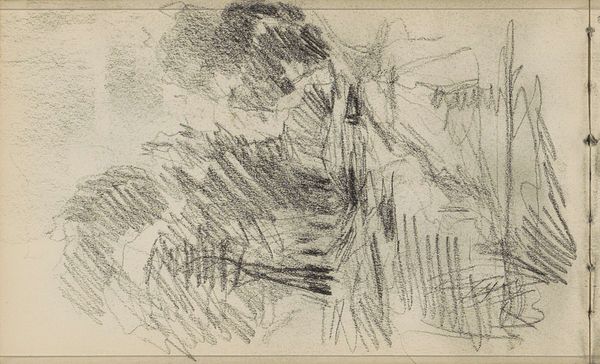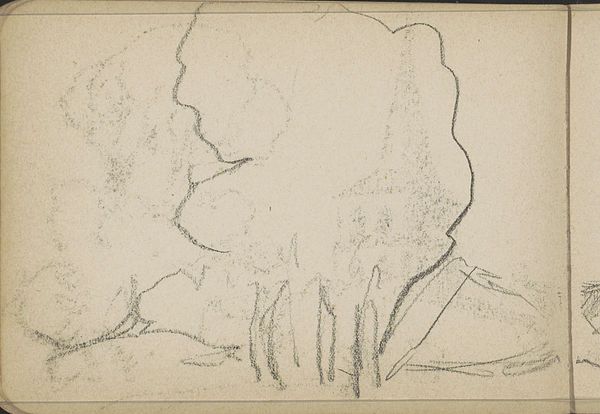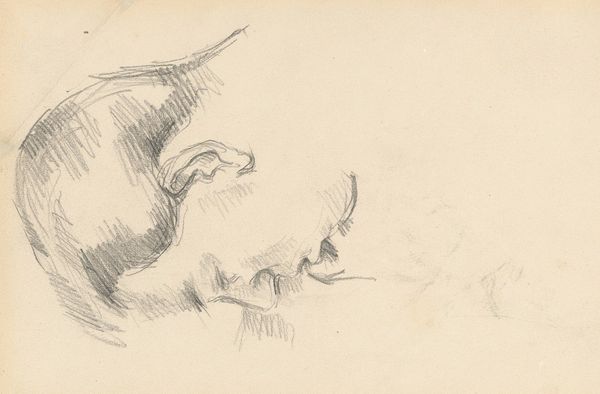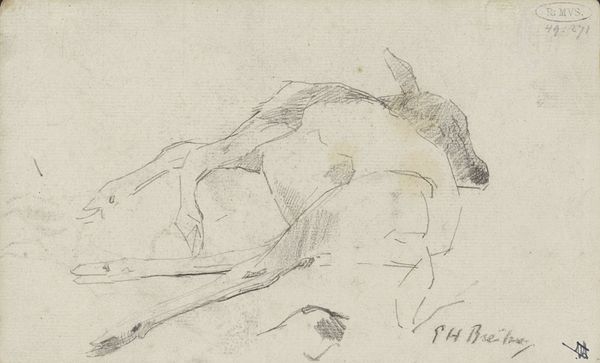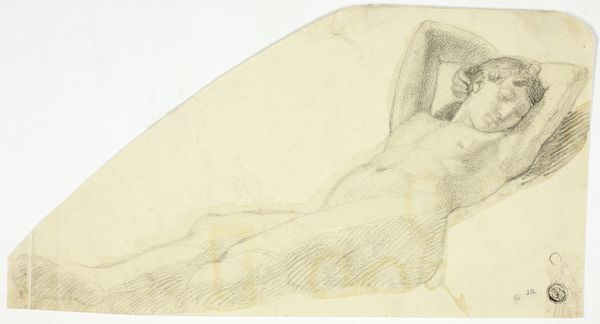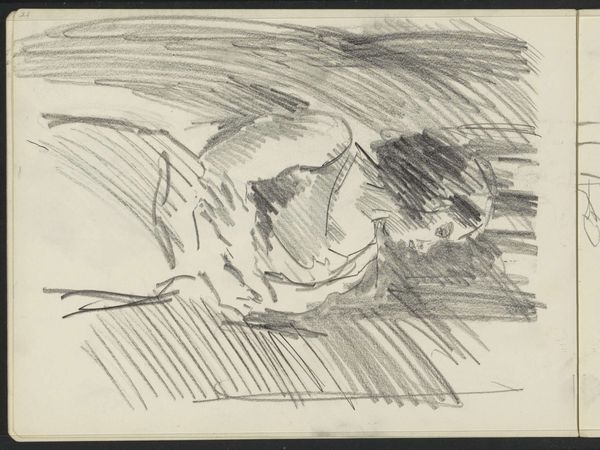
drawing, impasto, pencil
#
drawing
#
pencil sketch
#
landscape
#
impasto
#
pencil drawing
#
pencil
#
post-impressionism
Copyright: Public Domain: Artvee
Paul Cézanne rendered this landscape seen from inside a cave, using graphite on paper. Immediately, we are confronted with the contrast between darkness and light: the sheltering cave versus the beckoning world outside. The cave motif is ancient, a universal symbol appearing in myths and art across cultures. Plato used the cave as an allegory for human perception, while for Jung, it represents the unconscious, the place where hidden aspects of the self reside. Consider the cave paintings of Lascaux, echoing across millennia, or even Christ's nativity scene. Here, a cave or humble stable signifies a sacred, transformative event. Cézanne’s cave, sketched with rough lines, seems less a sanctuary and more a threshold. It invites us to consider how our understanding of the world is shaped by perspective and the shadows we carry within. The dichotomy of inside and outside suggests a psychological journey, a venture into the unknown corners of our minds.
Comments
No comments
Be the first to comment and join the conversation on the ultimate creative platform.
